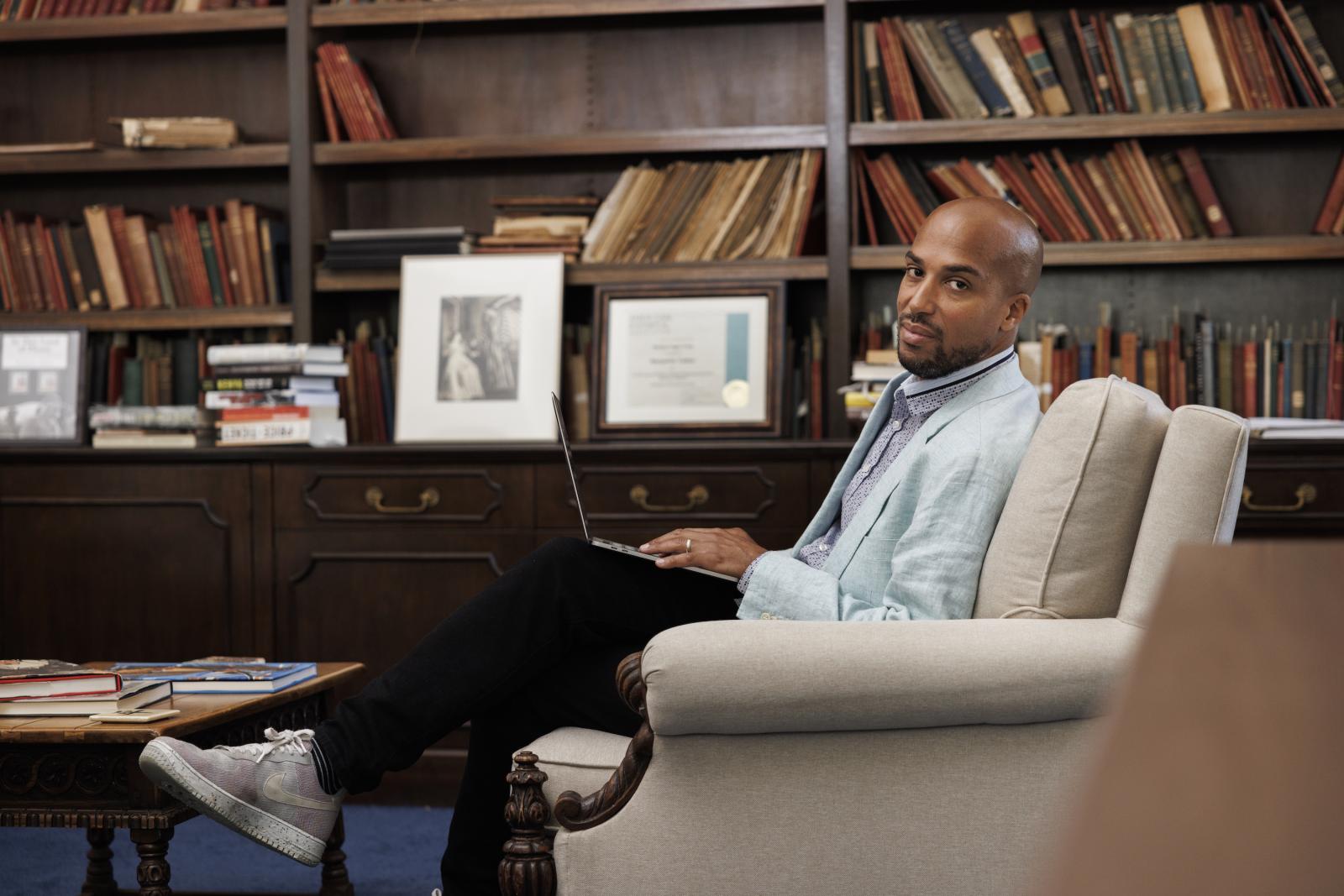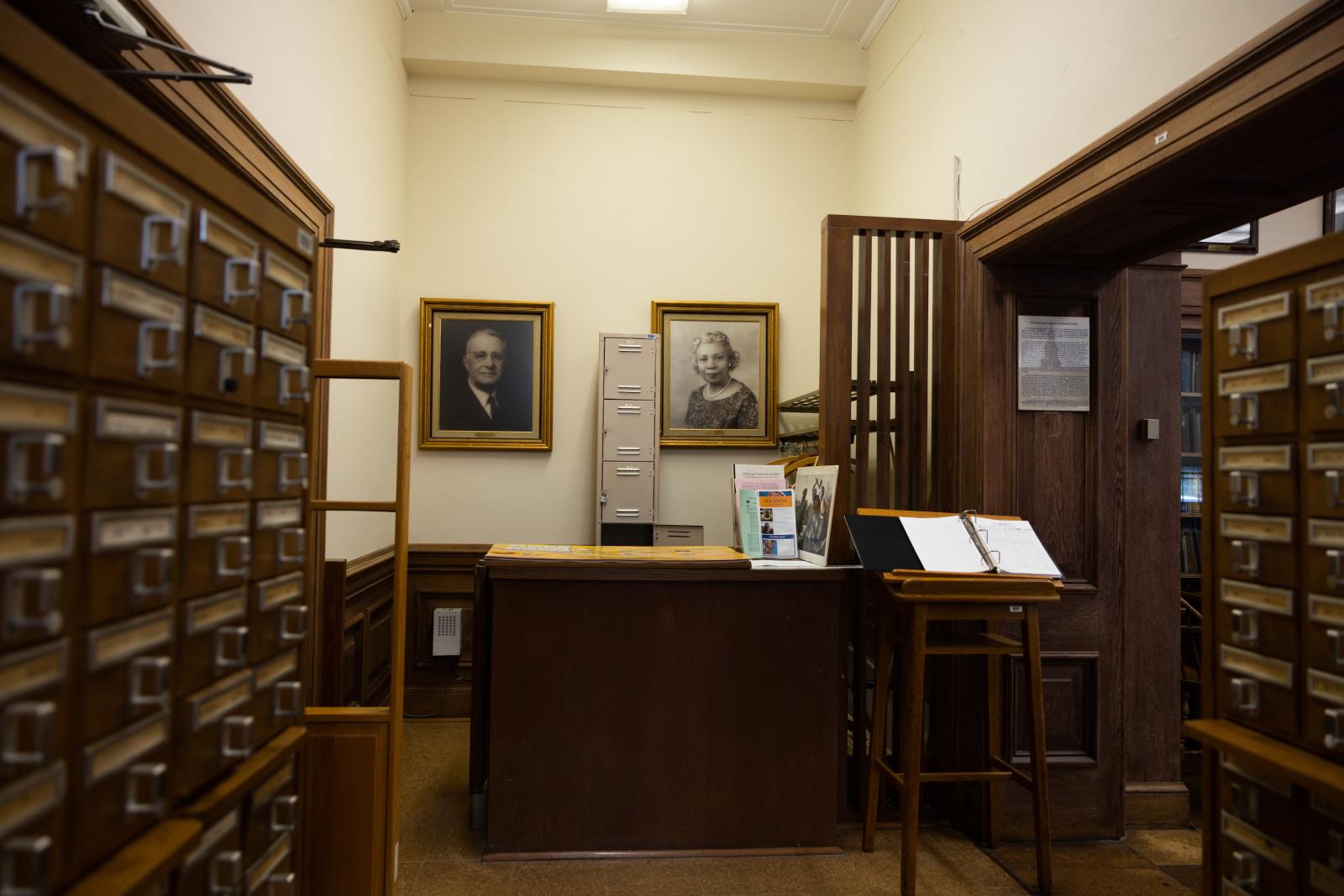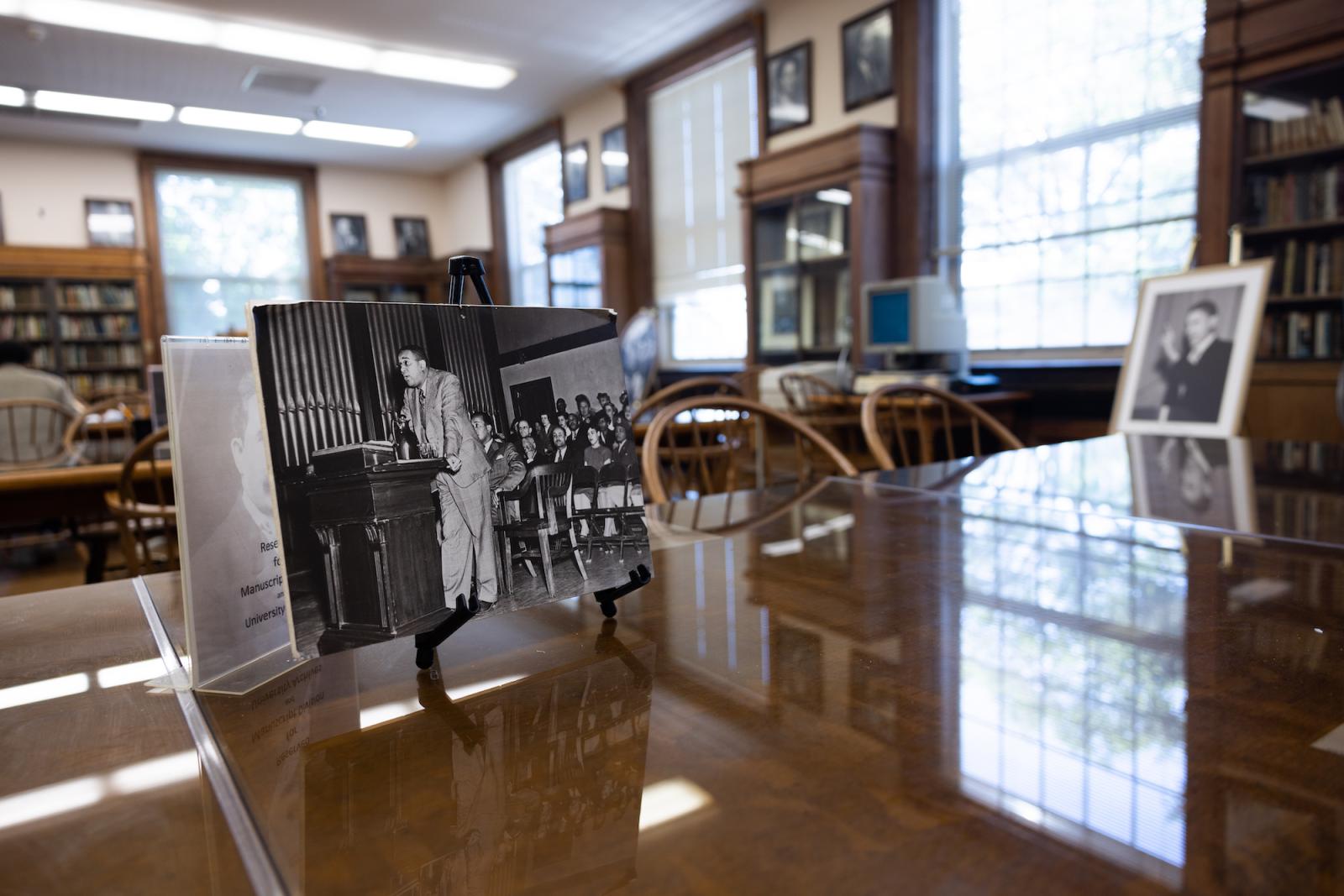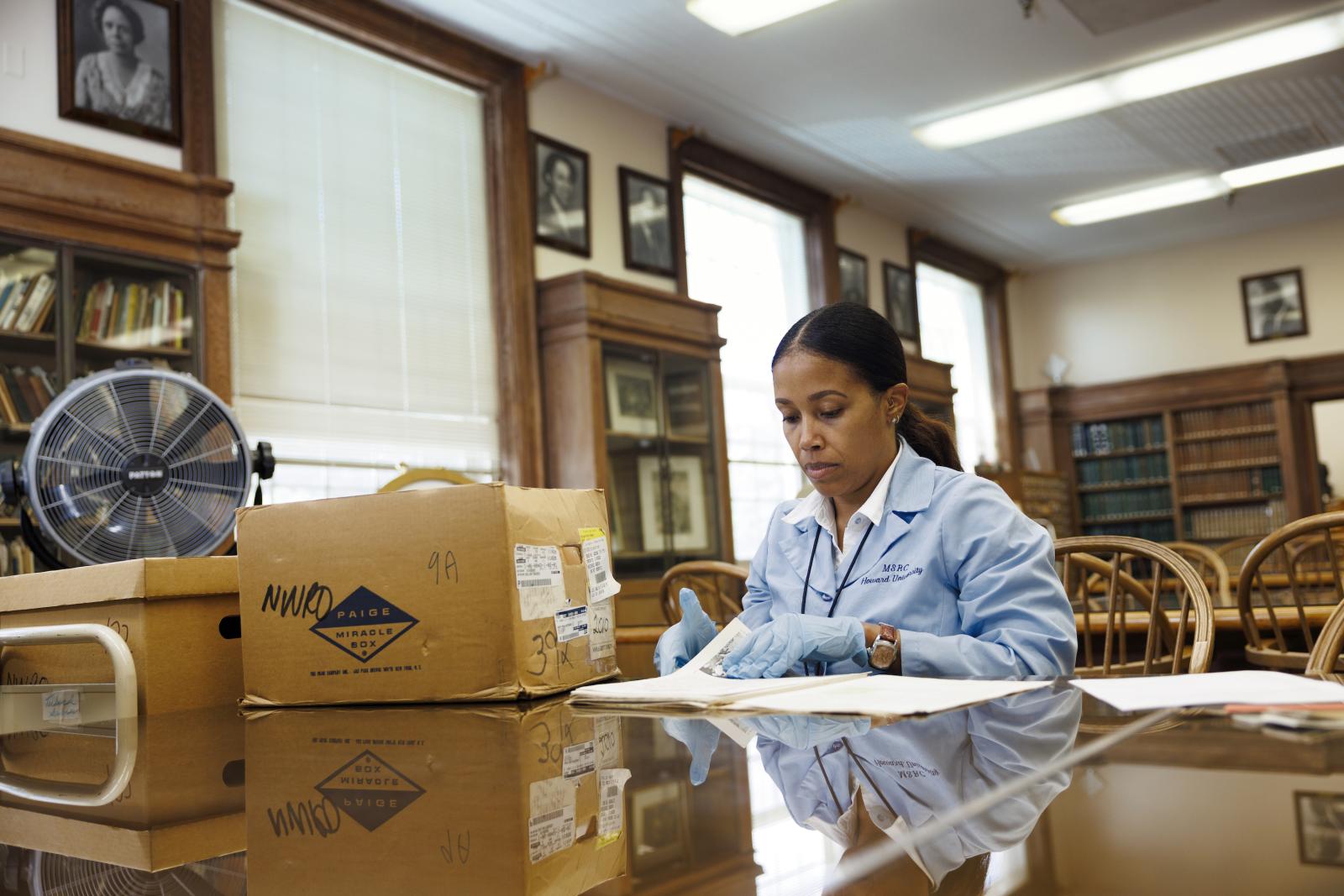The office of the director of the Moorland-Spingarn Research Center has dramatic floor-to-ceiling bookshelves. But in recent years, it has mostly been used for storage. On a recent Spring afternoon, the windows had been cracked open, and the center’s newly announced director, Benjamin Talton, PhD (BA ’96), was peering into his laptop, eager to reveal a series of new initiatives meant to renew the Howard institution.
“Oh, my goodness, we are going to be so busy,” says Talton, an alumnus who received his bachelor of arts in history from Howard University before completing a master of arts and a doctorate from the University of Chicago.
High on Talton’s list was the center’s acquisition of a comprehensive collection of photography of prolific and influential photographer Gordon Parks. The Gordon Parks Legacy Collection will be housed at Moorland-Spingarn, where students and faculty can access the images for classwork, research, exhibitions, and public programs (also available to the public for research purposes). Talton says the Gordon Parks collection enhances Moorland-Spingarn’s and Howard University’s status as “the preeminent institution preserving the Black global experience,” a characterization he adds, “I’m willing to take to the mat.”

Talton returns to campus following a 20-year career in the academy, including, most recently, at Temple University, where he was professor of history. His research and writing explore histories of the African diaspora, ethnicity and politics in Ghana, and the intersection of African and African American politics and popular culture in the 20th century.
At this time, when courses on Black history are being banned in schools in parts of this country, we are literally the ‘House of Truth.’”
The Moorland–Spingarn Research Center (MSRC) is recognized as one of the world’s largest and most comprehensive repositories for the documentation of the history and culture of people of African descent in Africa, the Americas, and other parts of the world. As one of Howard University’s major research facilities, the MSRC collects, preserves, organizes, and makes available for research a wide range of resources chronicling the Black experience. Talton says revitalizing Moorland-Spingarn and bringing its collections into the future couldn’t come at a more critical time given nationwide controversy over how Black history is taught in schools.
“At this time, when courses on Black history are being banned in schools in parts of this country, we are literally the ‘House of Truth,’” Talton says.
Talton emphasizes the importance of preserving the past to move forward in the correct trajectory, and that includes what’s happened at Howard University. “We are so profoundly shaped by the decisions of those who came before us,” Talton says. That includes aspirations within the University’s history department to create what became African diaspora studies, “a field of history that has become standard in universities throughout the country.” But even beyond providing academic standards, Howard was producing scholars “during a period in which white Americans continued to debate African Americans’ intellectual capacity to be equal citizens in a ‘free’ republic.”

“African Americans have had no choice but to aspire toward a future that was very different from their present,” Talton says plainly.
Moorland-Spingarn started as the Moorland Foundation in 1914 after University trustee Jesse Moorland donated his extensive private library on African and African American history and culture to Howard. The acquisition of civil rights attorney and future NAACP president Arthur Spingarn’s private collection in 1946 significantly enhanced the University’s collection of books, documents, and ephemera on the global Black experience.
In 1973, Moorland-Spingarn was made an independent center, reporting to the Office of the Provost, though in 2010 it was brought under the library when Howard Dodson, PhD, arrived as director of libraries and the Moorland-Spingarn Research Center. As of this past April, it returned to its independent status and is no longer situated as a unit in the Howard University Library System. Moorland-Spingarn Research Center itself encompasses a museum, an archive, a manuscript division, and a stand-alone library. In the past six months, the MSRC’s full-time staff has grown to 13 from five, including new leaders in the divisions.
At the library division, the center has added a chief librarian, Sammie Johnson, who arrived in June from Georgia State University-Clarkston. Johnson is expected to bring “some attention, stability, and vision to a very important unit of the center,” Talton says. The Moorland-Spingarn library is the largest in the world dedicated exclusively to the subject of the Black experience worldwide.

The current University archivist, Sonja Woods, has been elevated to chief archivist. In the manuscript division, Lela Sewell-Williams took over in February 2021.
Talton also points to the $2 million grant from the Jonathan Logan Family Foundation to support the preservation and digitization of the Black Press Archives, a newspaper collection of titles by Black journalists, editors, and publishers. The center worked in partnership with the Center for Journalism and Democracy to secure this critical gift, and the center will be committing additional funds to the project to ensure a significant number of publications in the Black Press Archives are available in an online repository for worldwide research. The project has provided resources that will allow the center to hire 10 new employees, mostly students.
In the Fall of 2022, Moorland-Spingarn will introduce a robust public-facing program, featuring a writers’ festival, a speaker series, and faculty lectures. Talton has also been mocking up a new website for the MSRC.
“Moorland-Spingarn has mostly been a place where people came to read, do research, and collect documents,” Talton says. “That will always be an important part of MSRC’s mission. But these new initiatives will bring our rich collections to the public in unique and dynamic ways and broaden our mission and relationship with the public.”
Article ID: 901




